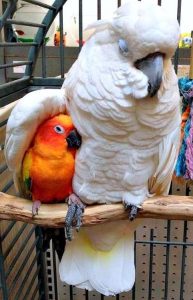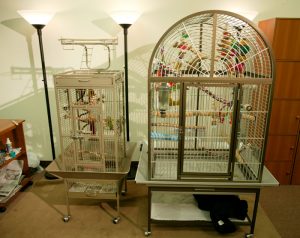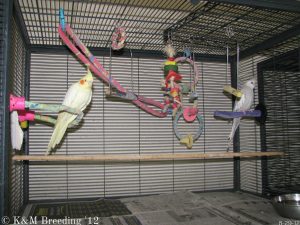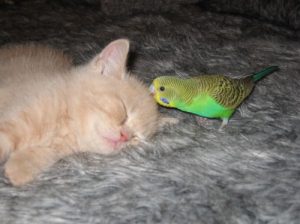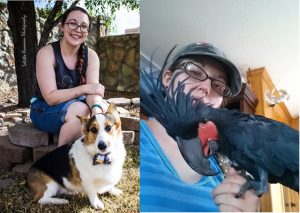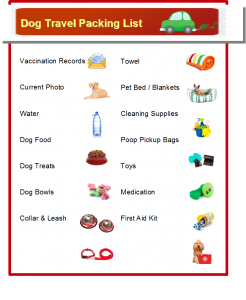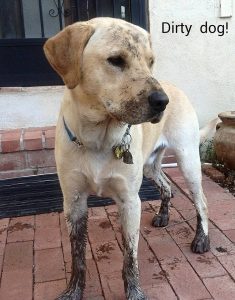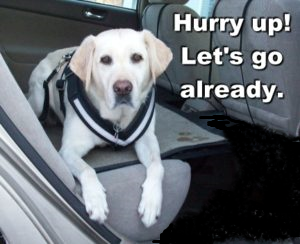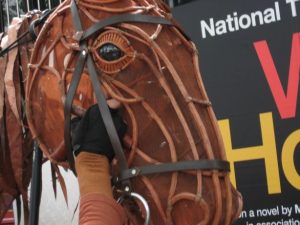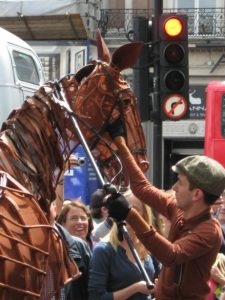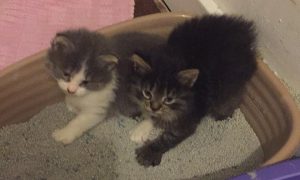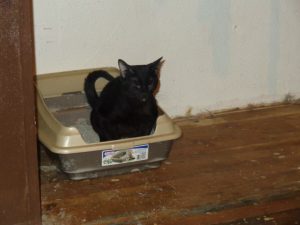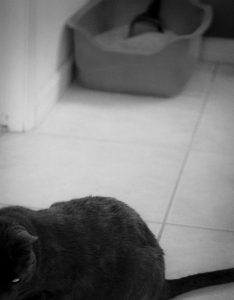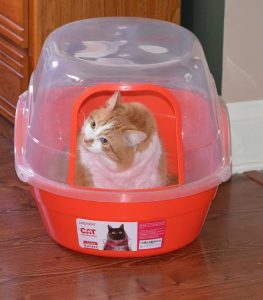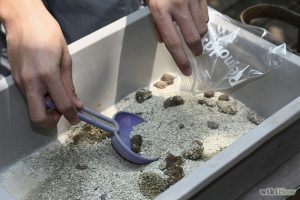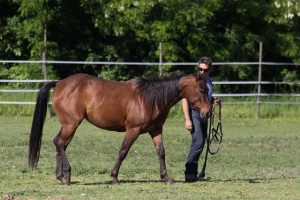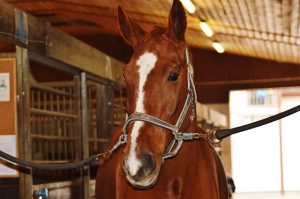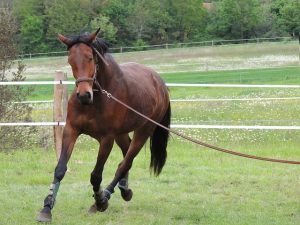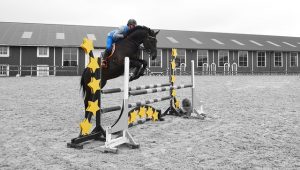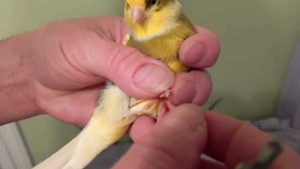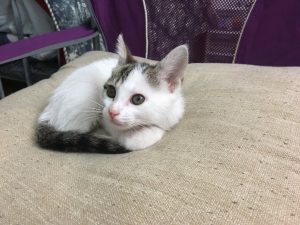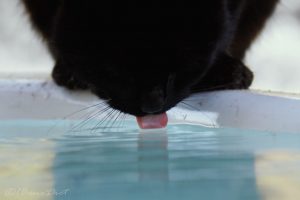We’ve all seen lost pets running along the sidewalk, down the street, or through our neighborhoods and wished we could help. Some of us may have even risked our own safety to try to save the life of a lost pet, with mixed results. For me, it is extremely difficult, nearly impossible, to see a dog running down the street without pulling over and trying to help. Since this is “Back to School” month (BARK to School, as we call it at Your Pet Space), I am going to teach you what you should do when you find a lost pet to keep the animal safe, and to keep yourself safe.
The first thing that you should know is that sometimes these animals know exactly where they’re going. Sometimes dogs, and especially cats, get out of their homes or they are even let out to roam the town by themselves. While this is greatly frowned upon, some owners still participate in this very dangerous practice. If you see a dog or cat walking down the sidewalk looking like they know exactly where they’re going, they probably do. This means that, if you pick up these dogs and take them off of their route, THEN they’ll be lost and their owners may not think of looking in the shelter because they’re used to their dogs being out on their own. This doesn’t mean that it’s okay, but if a dog or cat seems like they know where they’re going, you may want to think twice about picking them up. No animal is truly “safe” while wandering the streets, even if they know where they’re going.
This being said, if you decide you want to try to get this dog or cat off the street, there are a few procedures you should follow to keep yourself, the animal, and the drivers on the road safe. First of all, be careful not to slam on your brakes if you are driving. If you see an animal, pull over to a safe area before getting out of the car. If your car is in the way of other drivers, that can be a huge safety concern to everyone involved.

Chasing dogs down the street isn’t the best way to save them. Try luring them to you with treats and a “puppy voice”.
If you determine that you are in a safe area and the dog appears safe to approach, there are some items that you should try to have on hand. You should carry some good-smelling treats in your car to convince the dog to come closer. A variety of treats would be good in case they aren’t impressed by your first choice. Treats like dried liver, salmon treats, and jerky are some of the best smelling to dogs. Next, you should have a leash. Because many loose dogs don’t have collars, you should get a slip lead. This allows you to keep some distance from the dog, it gives you control, and it won’t matter if the dog doesn’t have a collar. You can turn a regular leash into a slip lead by feeding the end with the clip through the handle. This will create a loop in the leash that you can slip over the dog’s head. You will be holding the end with the clip as the handle with this method.
If you cannot get the dog on the leash or if it becomes frightened and runs into traffic, signal approaching vehicles to slow down. If the animal is in the road and appears to be injured, attempt to divert traffic around them. DO NOT PUT YOURSELF IN HARM’S WAY. Even though you’re trying to protect and save a lost animal, protecting yourself needs to be the priority. Do what you can to save the animal, but if the situation becomes too dangerous or if it becomes too much for you to handle, there is no shame in taking a step back. Inform local animal control agencies and keep an eye on the animal if possible while waiting for them to arrive. Anything you do to help save an animal is a gift, no matter how small it may be.
Once you get them on the leash, lure them into the car with treats. Avoid lifting the dog or letting them near your face as they may be more nervous than they seem and they may try to snap at you. They may also have parasites or diseases that you are unaware of that can rub off on your skin or clothes. When you get them in the car, you may want to restrain them by placing them in the back of the car where they cannot reach you, or by placing them in a crate if you have one handy. An energetic, nervous dog could cause some very dangerous driving conditions. In some cases, it is smarter to stay where you are with the dog in your car so you don’t have to risk driving. In this case, you would have to call the local animal control agency to pick up the dog, or call a friend or family member for back-up if you aren’t willing to turn them over to the shelter yet.
If you don’t feel comfortable taking the dog to the shelter right away, you have a few options. If you want to take the dog home until you find the owner, make sure to keep it separated from all of your other animals until they go to the vet. You have no way of knowing what diseases or parasites this stray dog might be carrying. Always check them for an ID and get them scanned for a microchip as soon as possible. In New Mexico, it is required by law that every dog gets microchipped, but some people do not choose to follow this law. You can get them scanned for a microchip at any vet clinic or at the shelter. I would recommend taking them to the vet as soon as you can because then you can have them looked at, as well. Be warned though, you will probably have to cover the vet bills, especially if you cannot locate the owner. Vet bills are a small price to pay when saving the life of an animal.
Once you have determined that the dog doesn’t have a licence or microchip or if the information is out of date, you may take them home and begin making “found pet” fliers. Make sure to contact all of your local shelters and vet offices to let them know about the dog and to file a found dog report. Post fliers in the area where you found them, and share pictures of them and their story online. DogCruces is a great resource for local lost and found pet reports. They are shared widely, and many owners are able to locate their animals through DogCruces. I would recommend that you hold onto the dog for as long as you are able. Shelters are a great place for owners to find their pets, but you can also file a found pet report through them. If they are at the shelter, they only have three days before being listed as “adoptable”. After this, they only have a few more days before facing the risk of euthanasia. By holding onto them as long as possible (and continuing to look for their owner) you are giving them a few more days of life.
The Humane Society of the United States explains that, “In almost every state, the animal is not ‘owned’ by the finder until the holding period for strays (as specified by state or local laws) has expired and the finder has made an attempt to reunite the animal with their original owner and…has taken steps—obtaining vaccinations, license, collar and identification tag—to prove they are now the owner.” In New Mexico, the holding period for strays is three days. This means that they must be in the shelter or you must actively be looking for the owner for three full days before you can decide to keep the dog or before they will be placed for adoption through the shelter.
To keep your dog safe, show them you love them by getting them spayed or neutered, getting them fully vaccinated, have them microchipped, make them an ID tag with their name and your phone number, keep them on a leash when you go out, make sure they can stay safely inside your house and yard, and give them all of the love that they can handle. Dogs are angels covered in fur, so treat them the best way you can possibly imagine. They deserve that and more.
Jessica Smith, Managing Editor, having been raised in a household full of dogs, guinea pigs, hamsters, and all things furry, Jessica’s love of animals has only grown over the years. She is currently volunteering for Safe Haven Animal Sanctuary in her free time when she isn’t out and about with her ridiculous pit bull mix, Annabel Lee, or taking care of her goldfish, Carrot Cake. She is also putting her literature degree to use by working as an editor for a local online magazine, Independent Noise. While she has no plans for the future, she knows that it will be filled with fur and fiction galore. You can e-mail Jessica at managerjessica@yourpetspace.info






